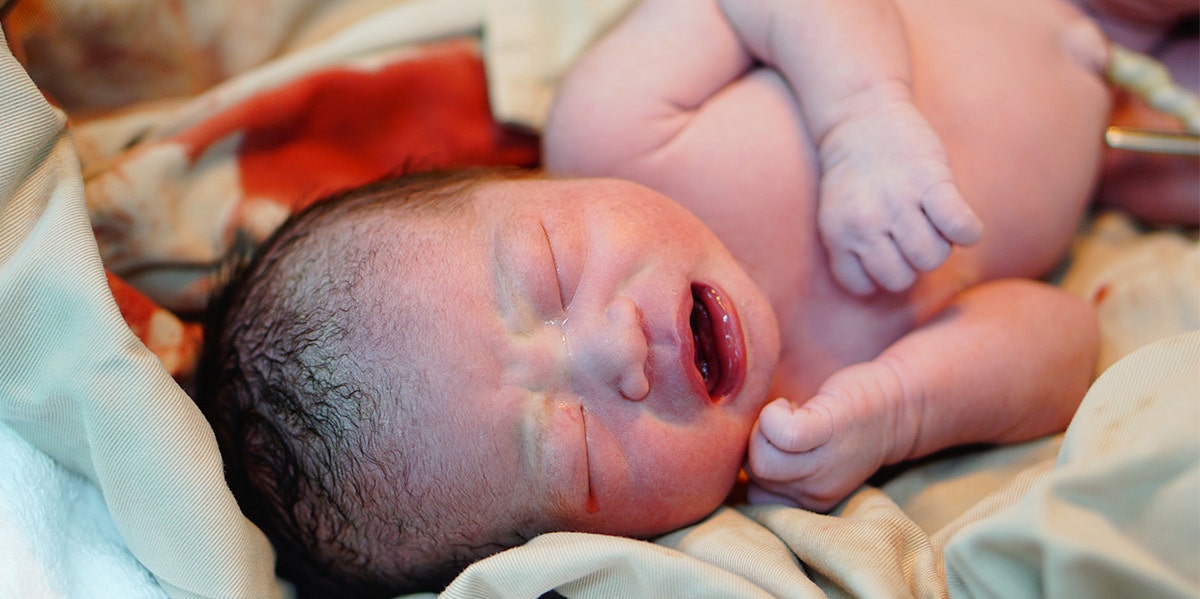
Scary.
By Nicole Weaver — Written on Sep 10, 2021
Photo: Piglon / Shutterstock

Women give birth every day, so OB-GYNs have come up with a pretty standard routine. But not everything in that routine is what is necessarily best for both the mother and baby.
Luckily, things are changing with more research, but some studies have found that the normal practice of clamping and cutting the umbilical cord as fast as 60 seconds after birth is harmful.
Isn't that parenting advice you wish you would have known before giving birth?
RELATED: What I Learned When My Wife And I Unexpectedly Gave Birth To A Baby With A Cleft Palate
In 2015, Chaunie Brusie, a midwife, wrote an article where she made the case against clamping and cutting the umbilical cord so soon after birth, and with good reason.
Babies get oxygen from the umbilical cord, so by cutting it soon after the baby is born, the baby's small lungs struggle to match the pace of blood that's rushing into them to get the first breath of air.
Other research has found that delaying the cutting of the cord actually helps to ease the baby's transition. It can give a baby more blood, oxygen and time to get adjusted.
It is actually quite astounding just how much blood a baby is getting from the cord after its birth.
Midwife Eileen Hutton says, “The implications are huge. We are talking about depriving babies of 30 to 40 percent of their blood at birth — and just because we’ve learned a practice that’s bad.”
A medical officer from the National Institute of Child Health and Human Development agrees, explaining, “It’s a good chunk of blood the baby is going to get if you wait a minute and a half or two minutes. They need that extra amount of blood to fill the lungs.”
RELATED: Virgin Births: It's Now Possible To Get Pregnant Without Having Sex
Waiting to cut the cord also leads to higher birth weights, reduces the risk of hemorrhaging, higher hemoglobin levels, an increase in iron, and lowers the risk of anemia later in life.
Although it's not regularly used for babies, waiting to clamp is often part of the routine for premature babies who need the blood cells.
But if it has all of these benefits, then why do doctors cut the cord right after birth?
Simple: it's easier for them to move the baby if it's clean and no longer attached. It also makes the process quicker, which is a huge motivation for doctors, sadly.
So, how long after birth should the cord be cut?
The World Health Organization recommends waiting one to three minutes before clamping the cord to prevent iron deficiency and anemia.
Related Stories From YourTango:
Once again, America is way behind. In the United Kingdom in 2015, the National Institute for Health and Care Excellence had already changed their guidelines to delay clamping for at least five minutes.
If you want to wait to clamp, make sure your doctor knows about your plan beforehand.
RELATED: South Dakota Woman Gives Birth To Triplets She Thought Were Kidney Stones
More for You:
Nicole Weaver is a love and entertainment writer. Find her on Twitter for more.
